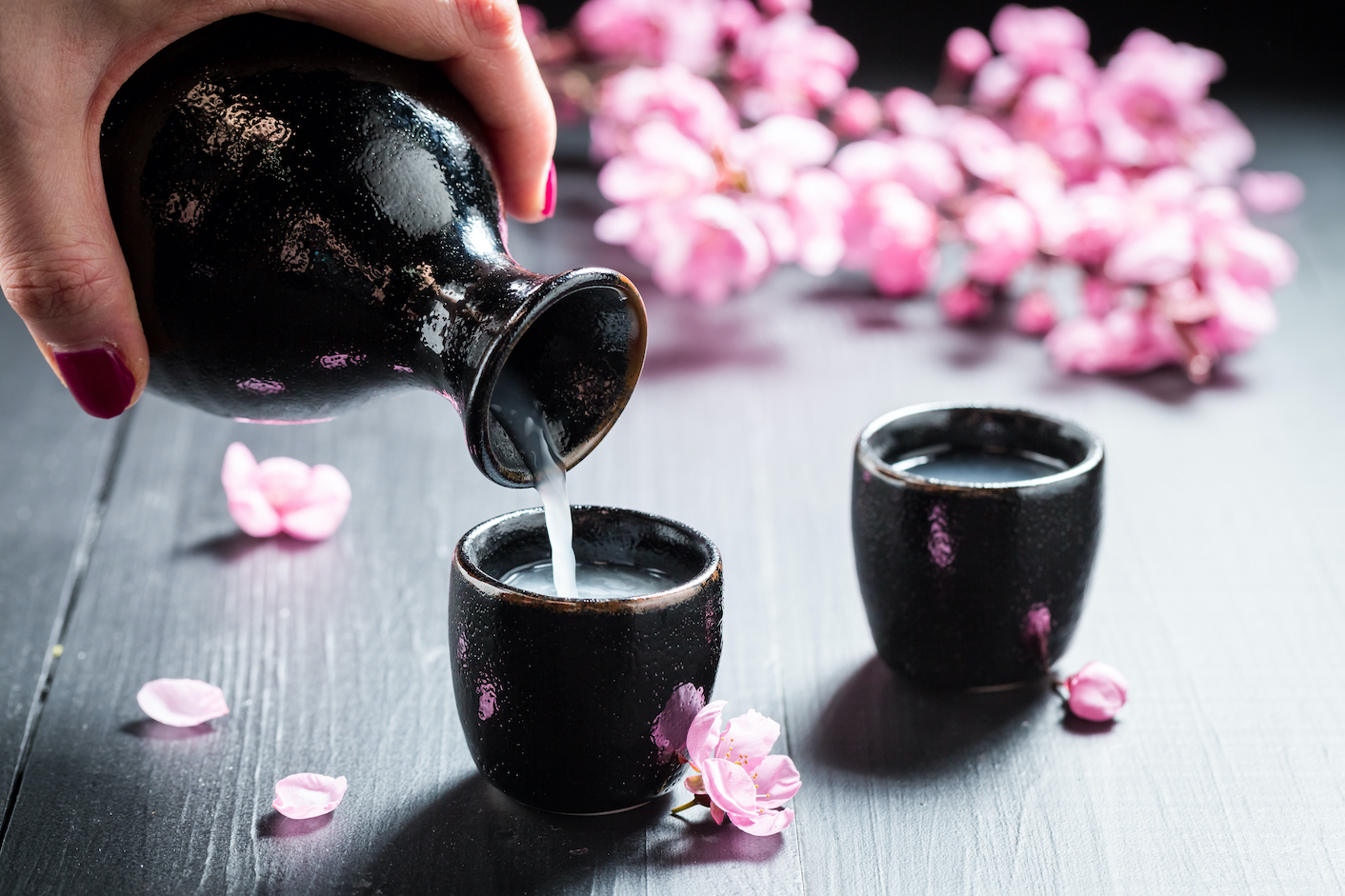As the national beverage of Japan, sake holds a special place in the hearts (and tastes) of millions of fans. Japanese sake is often served with a special ceremony backed by hundreds (sometimes thousands) of years of tradition. Today, sake can be served chilled or served warm, depending on the drinker’s specific taste. Despite its history, sake is a versatile beverage and can be found in a wide range of innovative cocktails. Let’s explore the origins of sake, serving methods, and the differences between hot sake and cold sake…
What is Sake?
Although referred to as “rice wine”, sake brewed in Japan is processed similarly to beer. It is made from fermented rice polished to remove the outer layer or “bran”. During the fermentation process, starches from the rice is converted into sugars, which then ferment into alcohol. Sake is typically pasteurized or processed under heat to kill pathogens before it is bottled. However, unpasteurized sake is available, with a distinctive sake taste and complex flavors that stands out from similar alcoholic beverages. Undiluted pure rice sake ranges in alcoholic content from 18-20% alcohol by volume (ABV), although most premium sake brands dilute the sake to an average of 15% ABV before bottling.
According to historical records, the rice fermentation process originated in China, then spread to the Japanese culture around 500BCE. Sake is mentioned frequently in ancient Japanese writings, particularly in the Kojiki (Japan’s first written history).
Varieties of Sake
In Japan and in other countries where sake is enjoyed, there are five distinct varieties. The legal name for sake is “Seishu”, which means “refined alcohol”. The five varieties are:
Junmai-shu — the purest form with no added alcohol
Ginjo-shu — a light flavor and aroma
Daiginjo-shu — fuller body and a slight aftertaste
Honjozo-shu — known for flavors like hints of white pepper
Namazake — sake that is not pasteurized, meaning it must be refrigerated
Each variety is brewed in a slightly different way, lending unique flavor and aroma to the varieties. Of course, some brewers will craft their own blends, such as Junmai ginjo or Junmai daiginjo. Still other brewers have experimented with variations in brewing, such as aged sake that is stored in wooden barrels before it is transferred to bottles.
There is one other variety that bears mentioning: The top-shelf sake that is known as Tokubetsu junmai, or “special pure”. This sake is known for a more full-bodied bold flavor than the delicate fruity taste and floral scent of many sakes available in Japan or abroad.
Hot Sake
Hot sake is the traditional method of serving this popular beverage, especially in winter months. For warmed sake, lower-quality sakes (aka cheaper sake) are often used, as the delicate fruity aroma and subtle flavors may be lost to the heat.
Hot sake is served at different temperatures, depending on the preferences of the drinker. Some sake enthusiasts prefer warm sake that is at body temperature – considered the perfect temperature for releasing its flavors and aromas. In general, however, hot sake is served at a temperature of around 122 degrees Fahrenheit (for those that like to drink sake hot, although many just like sake warm). Sake is usually warmed to serving temperatures just before being consumed.
The sake flask or sake bottle (called tokkuri) is heated in hot water and served in small porcelain or ceramic cups called o-choko. In more traditional settings, the warm sake is served in a small box made of a special cypress wood called hinoki. This box was originally used for measuring sake rice.
Cold Sake or Chilled Sake
In modern restaurants and taverns, cold sake is often served in glassware similar to a white wine glass. Chilled sake is typically served at around 50 degrees Fahrenheit, although the temperature can be adjusted to suit the drinker. In some cases, sake served at room temperature is preferred.
The alcohol content of chilled varieties is the same as those destined to be served warm. Seasoned sake sommeliers describe the flavor profile of cold sake as that of very dry white wine. Chilled sake is preferred in the warmer months, while sake served hot is reserved for tradition or for winter months.
How to Drink Sake: Serving Tips
Sake can be served straight or used as a mixer for cocktails (like the sake bomb, sake Southside, or the sake samurai).
Whether serving sake chilled or heated, there are several tips that can make your sake experience more memorable:
- Warming sake should be done just before drinking. If the sake temperature falls over a few hours, it may be reheated, although some of the more delicate flavors may be lost.
- Sake should be heated in boiled water and the temperature checked carefully as it is warmed. Sake that is too hot often tastes harsh.
- Lighter bodied sakes should be served at room temperature, while the ideal serving temperature for premium sakes is close to the body’s natural temperature.
- Whether you prefer a particular sake hot or cold, a shout of “kampai!” is the traditional toast. This word means “dry sake cup” and is translated to “drain your cup” or “bottoms up.”
Remember that it is the drinker’s personal preference that dictates whether a sake is served hot, chilled, or somewhere in between. Versatile sake is a hit around the world; you can enjoy most sake at home, in your favorite restaurant with a food pairing, or even in the hottest nightclubs.

